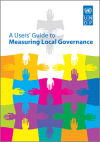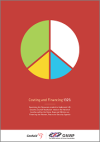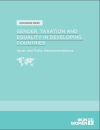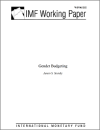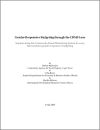FOUND 20
This Guide was preared by Alexandra Wilde, Shipra Narang, Marie Laberge and Luisa Moretto UNDP Oslo, 2009.
Examining the resources needed to implement Security Council Resolution 1325 at national level as well as the gains, gaps and glitches of financing the women peace and security agenda. Over the last decade the policy environment on women, peace and security has gained significant momentum.
Paper discussing the definition and measurement of Sustainable Development Goal (SDG) Indicator 5.c.1. (reclassified to Tier II) and comparing Indicator 5.c.1 with other SDG fiscal indicators.
Using country-level data, the paper estimates the costs of interventions aimed at promoting gender equality and women's empowerment in Bangladesh, Cambodia, Ghana, Tanzania, and Uganda. It then uses these estimates to calculate the costs of such interventions in other low-income countries.
Discussion paper examining the gender impact of personal, corporate and consumption taxes and proposing alternative tax policies to promote gender equality.
This IMF Working Paper examines how public processes can contribute to improving women's status. Gender budgeting, which refers to the systematic examination of budget programs and policies for their impact on women, has been tried in a range of countries in recent years.
The paper reviews the literature on the gender dimensions of taxation and the implications for tax policy with special reference to developing countries. It was commissioned by the Commonwealth Secretariat as part of the organization's commitment to integrate gender concerns into economic policy.
This manual published by United Nations Human Settlements Programme (UN-HABITAT) in 2008 is designed to assist training institutions in mainstreaming gender concerns in local government capacity-building and in training related to human settlements as conducted by Habitat Agenda partners.The Sourceb
The sourcebook for Trainers was published by the United Nations Human Settlements Programme (UN-HABITAT) - 2008.
The paper suggests how the Community-Based Monitoring System (CBMS), developed and implemented in 14 countries over the last ten years with financial support from the Canadian International Development Research Centre (IDRC), can be used to facilitate gender-responsive budgeting (GRB) at the local l
